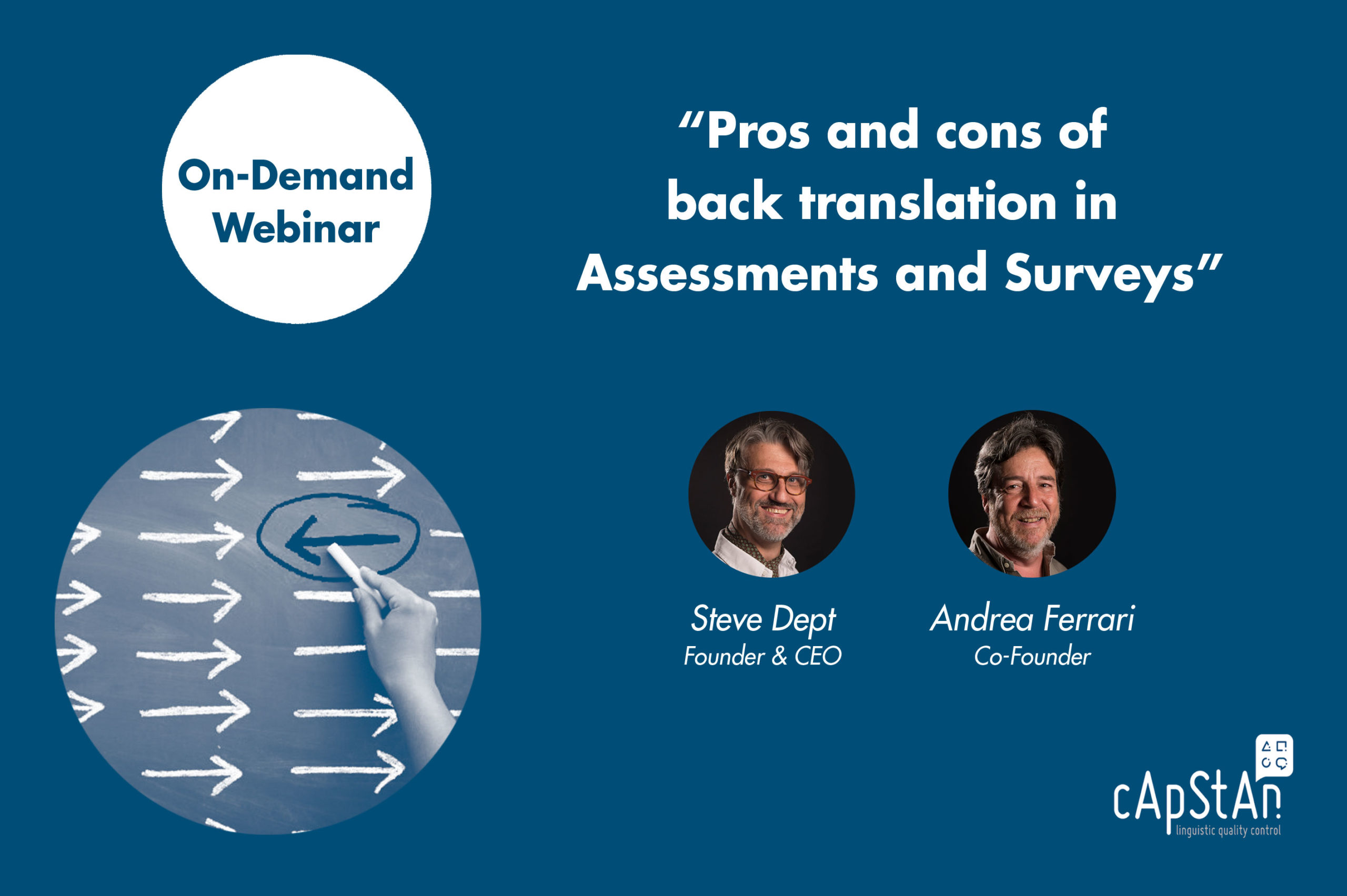
On-Demand Webinar| Pros and cons of back translation in assessments and surveys
Pros and cons of back translation in assessments and surveys
A webinar by Andrea FERRARI and Steve DEPT, the founders of cApStAn Linguistic Quality Control. In 45 minutes, they will tell you everything you always wanted to know about back translation but never dared to ask such as:
- To evaluate the quality and semantic equivalence of translated tests or questionnaires, what is regarded as good practice in 2020?
- Are there studies that provide evidence supporting one given translation evaluation method above other forms of translation review?
- What are the typical issues back translation will and will not detect?
- What are the alternatives to back translation?
- What do they use in international large-scale assessments (ILSAs) such as PISA, TIMSS, PIAAC or PIRLS?What do they use in international attitudinal surveys?
Telling examples from international studies – for which Andrea and Steve were commissioned to verify translation quality and cross-language comparability – will help you understand why some experts regard back translation as obsolete and why other experts still recommend to use it.
Update the form to receive the webinar recording and slides.
Fill out the form to receive the webinar recording and presentation slides:
About speakers

Steve Dept, Founder & CEO
Steve is one of cApStAn’s founders. He received his education in English, Dutch, French and German but he is essentially an autodidact and a field practitioner. In 1998, Steve was sought out to organise the translation verification of PISA 2000 instruments and, since cApStAn’s creation in 2000, Steve has supervised linguistic quality assurance in PISA and in over 35 international surveys and polls. His translatability assessment methodology is applied in small and large multilingual projects in both the private and the public sector. Steve is the driving force behind cApStAn’s adaptive strategy.

Andrea Ferrari, Founder & CFO
Andrea is one of cApStAn’s founders. He was exposed to a multicultural environment from early on, living and studying in Canada, Italy, Australia, Greece and Belgium. He earned a degree in business engineering from the Solvay Business School, Brussels, in 1981, did a stint with a major multinational (Procter & Gamble) but switched to self-employment in 1987, as a freelance translator and speaker. In 1999 he participated in the first cycle of PISA as an Italian verifier, and quickly acquired a taste for the development of linguistic quality assurance procedures. In 2000 he joined Steve Dept to found and co-direct cApStAn. Andrea supervises financial operations and R&D efforts for the group.
More on the back translation approach in international data collection instruments:

Data collection in multiple languages has become commonplace. Principal investigators, survey methodologists, cognitive researchers, psychometricians or test developers who have administered or plan to administer instruments in several languages are aware that there are challenges involved. They know about the ITC Guidelines for Translating and Adapting Tests, or the Cross-cultural Survey Guidelines, or recommendations by the World Health Organisation such as in this example.
Richard Brislin, for example, often cited about back translation, was well aware of the shortcomings of this approach and did not recommend its use as an exclusive evaluation method. Research by the late Professor Janet Harkness and colleagues, by Aletta Grisay, by Alisú Schoua-Glusberg, indicates that other forms of translation review and assessment may be more efficient than back translation.
Nonetheless, the terms of reference in calls for tender still often request forward translation and back translation of data collection instruments. This approach must have some merits. If “raising cattle” is translated into Afrikaans and the independent back translation of the item is “lifting cattle”, it obviously has helped you to detect a mistranslation.